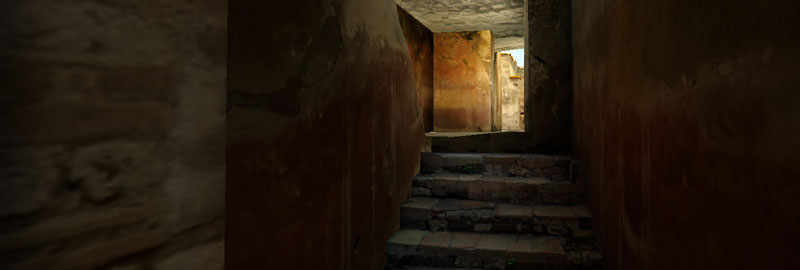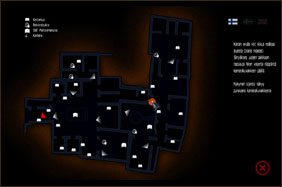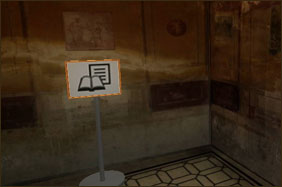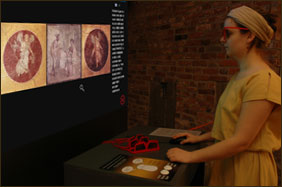 |
 |
 |
 |
           |
 |
 |


 |
 |

Significant effort was put into the interaction design of the installation to provide the museum visitors a fluent experience.
Factors such as accessibility and usability needed to be considered to reach the widest possible audience — the museum visitors
represent a wide variety of people of multiple ages, nationalities and skills. For example all the textual content
and the instructions had to be in three languages (Finnish, Swedish and English).
The fundamental mode of interaction that we wanted to encourage was exploration — how to engage the users so that they easily find
the most important content? Free mouse-based navigation with the possibility to look around in the model provided the basis for this.
Icons and visible hotspots on the ground provide hints about the locations of the additional material such as photos from the excavation
site. The overview map mode is another way of finding content and moving between different areas of the house.
Accessibility was considered when building the physical installation setups: people come in different sizes and everybody should be able
to use the installation. Other considered factors were left/right- handedness and the visibility of the instructions. Special attention
was paid to make the tables suitable for users in wheelchairs. Durability and hygiene are also relevant concerns when designing for public
spaces, since there can be easily several thousands of visitors. |
|
 |
|


